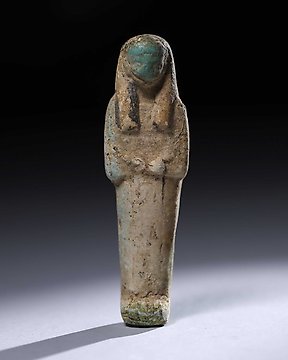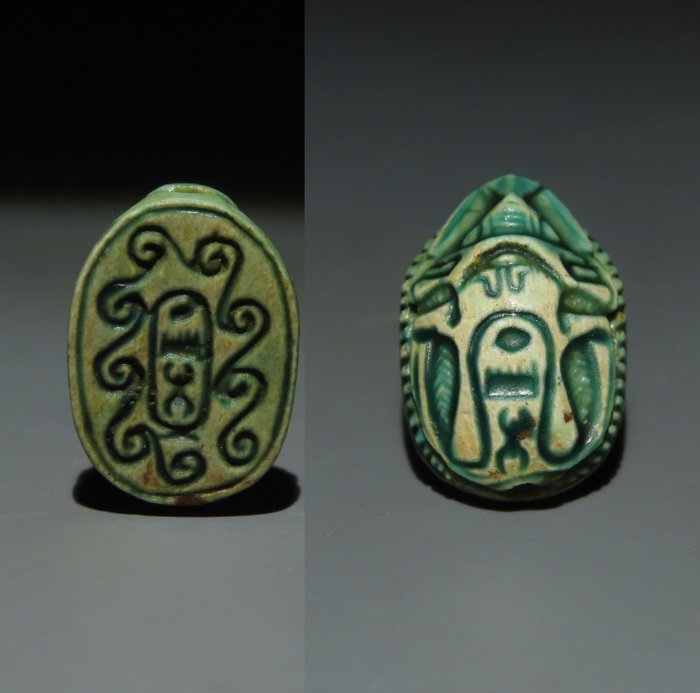
Ancient Egyptian Ushabti - 11 cm
No. 80873511

No. 80873511

Scarab pharaoh Tuthmosis III
New Kingdom, Reign of Tuthmosis III, c. 1479 to 1425 BC
MATERIAL: Glassed Steatite.
DIMENSIONS: 1.6 cm Length.
PROVENANCE: Private collection, Besançon, France. Purchased at Auxerre Master Sineau Auction House Sale of March 29, 1987.
CONDITION: Good condition, intact.
The scarab was an amulet of life and power in the form of a dung beetle, animal associated with Khepri, the self-created, Ra as the rising sun. In ancient times it was believed that the beetle was only of the male sex and that it reproduced itself using a dung ball as the ovum. The supposed self-reproduction of the beetle was similar to that of Khepri, who created himself out of the nothing. At the same time, the dung ball which was rolled by the beetle was identified with the sun in its cycle across the heavens. The scarab was, therefore, a symbol of resurrection in Egyptian mythology. In one’s lifetime it provided protection against evil, visible or invisible, supplying strength and power every day. In death, he who wore this amulet had the possibility of resurrection and being granted eternal afterlife.
Thutmose III, (died 1426 BCE), king (reigned 1479–26 BCE) of the 18th dynasty, often regarded as the greatest of the rulers of ancient Egypt. Thutmose III was a skilled warrior who brought the Egyptian empire to the zenith of its power by conquering all of Syria, crossing the Euphrates (see Tigris-Euphrates river system) to defeat the Mitannians, and penetrating south along the Nile River to Napata in the Sudan. He also built a great number of temples and monuments to commemorate his deeds.
Notes:
- The piece includes authenticity certificate.
- The piece includes Spanish Export License.
- The seller guarantees that he acquired this piece according to all national and international laws related to the ownership of cultural property. Provenance statement seen by Catawiki.
THE MINISTRY OF CULTURE FROM SPAIN ASKS ALL SELLERS FOR INVOICES OR OTHER DOCUMENTATION ABLE TO PROVE THE LEGALITY OF EACH ITEM BEFORE PROVIDING AN IMPORT OR EXPORT LICENSE.
How to buy on Catawiki
1. Discover something special
2. Place the top bid
3. Make a secure payment